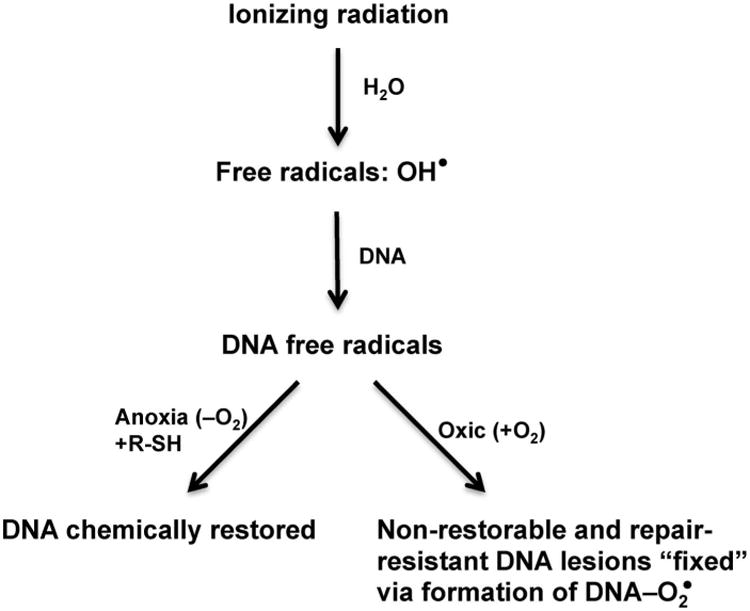Fig. 1.

Schematic representation of the oxygen fixation hypothesis (OFH). When living cells are irradiated, X rays interact primarily with H2O to generate the hydroxyl free radicals. These highly reactive free radicals then interact with DNA macromolecules to generate initial DNA free radicals. In the absence of O2, these highly unstable DNA radicals can be chemically restored upon reduction by sulfhydryl compounds (R-SH) and/or other reducing molecules. Under oxic conditions, O2 reacts with DNA radicals and converts them into chemically nonrestorable oxidized derivatives, as if these DNA lesions are “fixed”. These “fixed” lesions are also resistant to enzyme-mediated repair.
